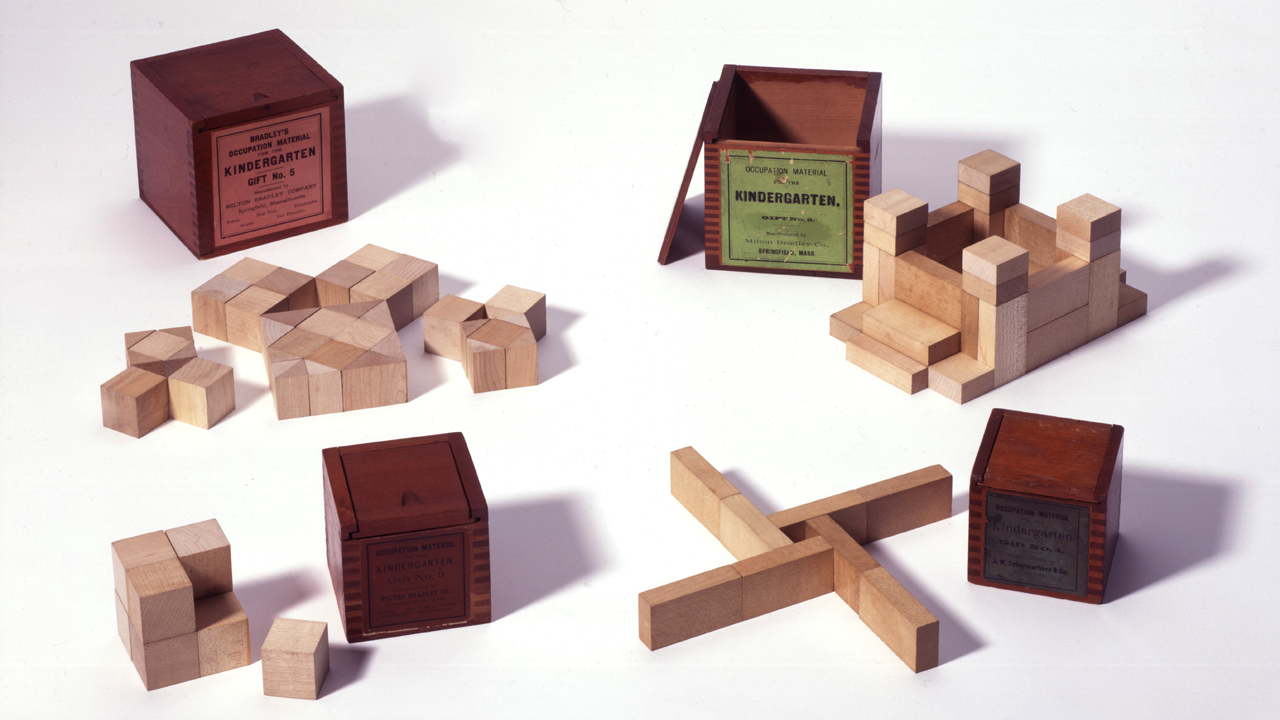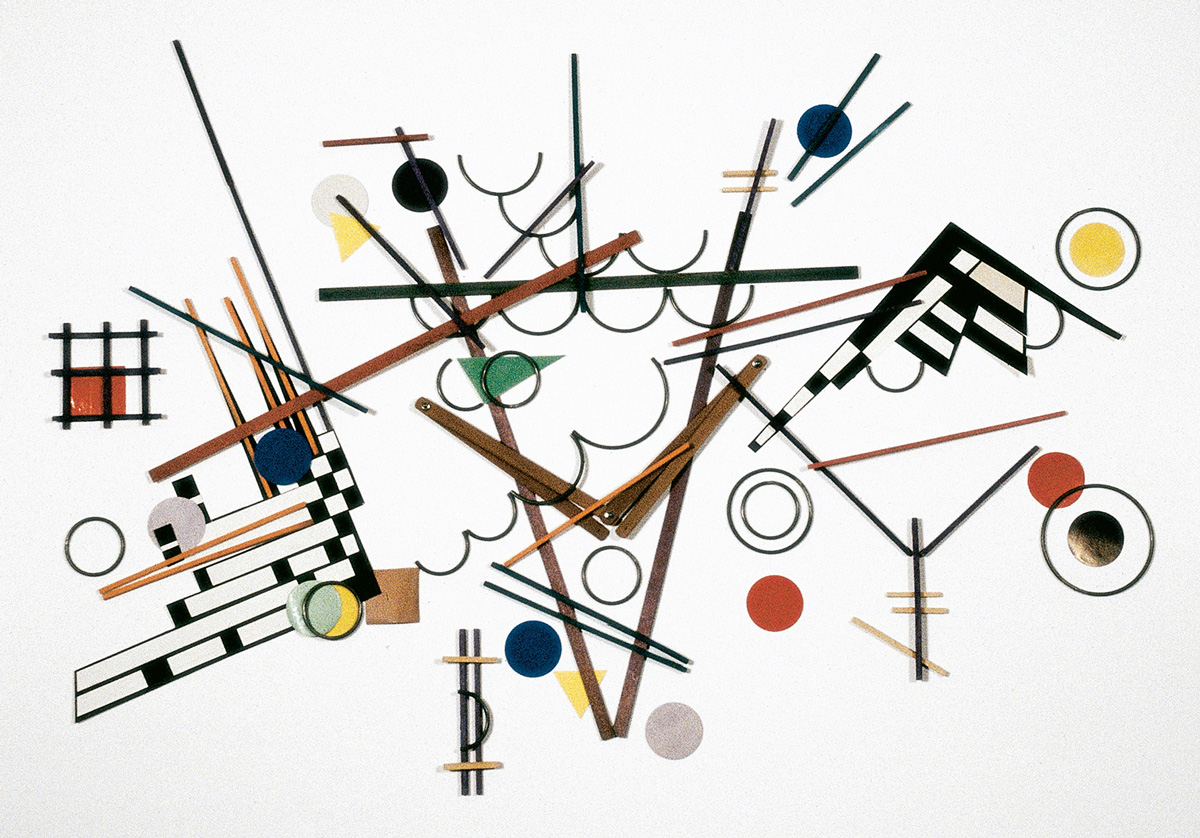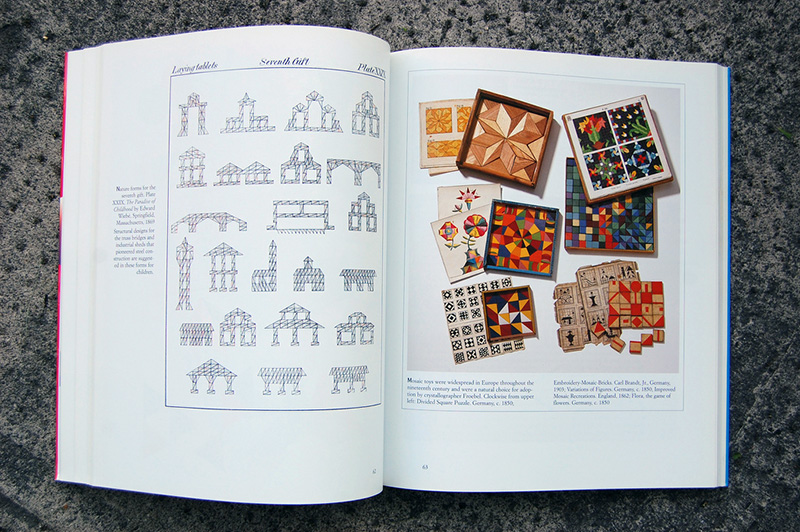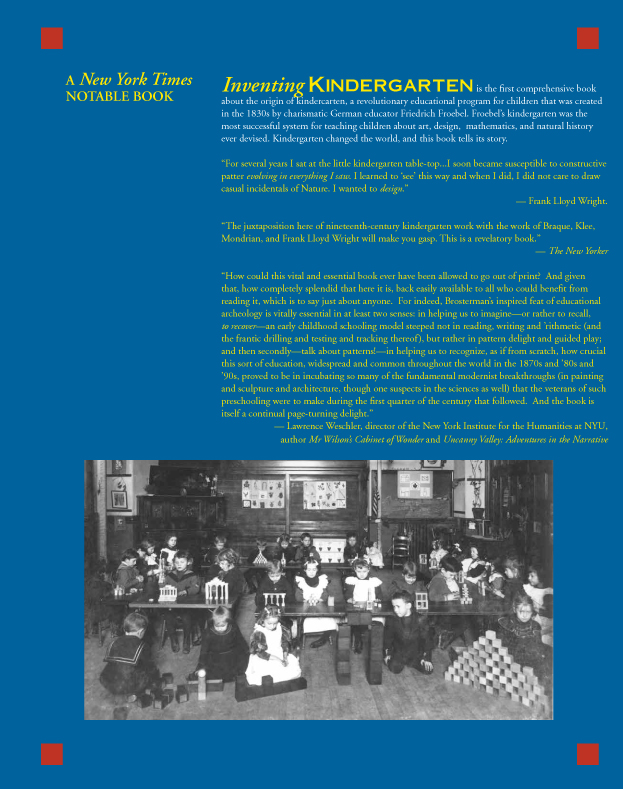Inventing Kindergarten

Kindergarten was the seed-pearl of the modern era
Inventing kindergarten is the first comprehensive book about the origin of kindergarten, a revolutionary educational program for children that was created in the 1830s by charismatic German educator Friedrich Froebel. Froebel's kindergarten was the most successful system for teaching children about art, design, mathematics, and natural history ever devised. Kindergarten changed the world, and this book tells its story.
The juxtaposition here of nineteenth-century kindergarten work with the work of Braque, Klee, Mondrian, and Frank Lloyd Wright will make you gasp. This is a revelatory book. — The New Yorker
"In or about December 1910, human nature changed." When she made this understated observation in 1924, Virginia Woolf was referring to a major London exhibition of post-impressionist art. The tentative dissolution of pictorial reality in the paintings on view was a portend of the Cubist upheaval simultaneously brewing in Paris, and a ringing declaration of the advent of the Modern era. Woolf might have been alluding to a great deal more in the decade ending in 1914 that Edward Fry called "one of the golden ages of Western civilization."

Remarkable advances and achievements were made in every aesthetic, scientific, and intellectual realm as 19th century linearity fractured into 20th century uncertainty. Literature was enriched with the works of Thomas Mann, Marcel Proust, and Guillaume Apollinaire, the boundaries of music were permanently expanded by Igor Stravinsky and Arnold Schoenberg, and Sigmund Freud and Edmund Husserl revised Europe's views on the nature of sexuality and human existence. Particle physics and nuclear fission's aspirations and nightmares were born concurrently as Max Planck, Ernest Rutherford, and Niels Bohr penetrated the heart of the atom. Albert Einstein, intuiting Nature's abhorrence of stasis, postulated the equivalency of matter and energy, and turned three-hundred years of self-confident Newtonian mechanics on its head. The architecture of Frank Lloyd Wright and Walter Gropius signaled a long-awaited, and definitive rejection of the obsessive historic revivals of the 19th century and Le Corbusier's early structural experiments foreshadowed the subsequent development of the International Style. And Georges Braque, Pablo Picasso, Piet Mondrian, Marcel Duchamp, Theo van Doesburg, Kasimir Malevich, Wassily Kandinsky, Constantin Brancusi, and Umberto Boccioni, among many others, successfully overthrew most of the conventions and traditions of Western painting and sculpture while inventing an entirely new aesthetic universe.

"Modernism," the confluence of historical, artistic, scientific, and psychological, and philosophical currents that breached the banks of Western civilization after the turn-of-the-century, has been the focus of countless insightful investigations. Although historians have pondered the influences and effects of this cultural upheaval since its occurrence, few have been guileless, or perhaps foolish enough to suggest any simple reason for society's sharp turn at that particular point in time. Attempts at a convincing exegesis tend toward the general — democratic stability (or instability), psycho-sexual emancipation, the "machine age" — or the specific — Paul Cezanne's brush-strokes or African sculpture. Cubism, Braque and Picasso's quite literally earth-shattering advance on Cezanne's fractured, landscape paintings, played an obvious defining role on all of the plastic arts, subsequently sparking the birth of a swath of similarly intellectual, geometric, and architectonic, aesthetic movements, including Suprematism, Futurism, and De Stijl. But prior to their union and alignment before World War I there would seem to be little to relate, and nothing to unite, the widely diverse Pantheon of geniuses mentioned above, except the obvious fact of their birth in the second half of the 19th century.

There was though an international force for change of dramatic potency that never appears in discussions on the roots of Modernism and is only rarely mentioned as an influence on the movement's pioneers. The Victorian childhood of the seminal Modernists coincided with the development and widespread embrace of a radical educational system that was a catalyst in exploding the cultural past, and restructuring the resulting intellectual panoply with a new world-view. It was never fodder for artistic argument over absinthe and Gauloises in Montmartre cafés, nor was it taught at the tradition-bound academies. It has been largely ignored because its participants — three to seven year-olds — were in the primary band of the scholastic spectrum. It was the seed-pearl of the modern era and it was called Kindergarten.

Reviews
February 2, 1997
September 7, 1997
October 21, 1997
February 17, 2009
March 4, 2011
